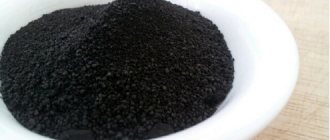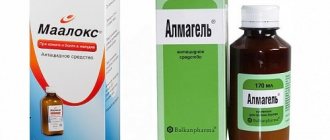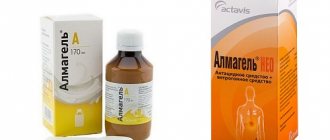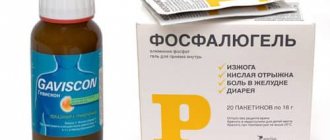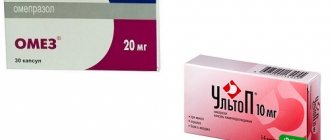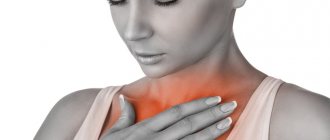Have you ever experienced heartburn? If not, then it’s a matter of time: almost every adult has felt an unpleasant burning sensation in the esophagus at least once in their life. Due to the widespread prevalence of the problem, heartburn remedies are a hot commodity in any pharmacy, especially during the New Year holidays and other holidays associated with feasts. And almost always the assortment is presented in a prominent place in the display case. All antacids belong to the OTC group of drugs, which places responsibility on the pharmacist, who is obliged to recommend this or that drug. What do you need to know about the nature of heartburn in order to choose an effective and safe drug for a particular buyer? What questions to the buyer will help the pharmacist make a choice?
Required knowledge
Heartburn is a symptom subjectively perceived as a feeling of burning or warmth of varying intensity and duration, occurring behind the sternum and/or in the epigastric region, spreading upward from the xiphoid process. In the domestic epidemiological study "MEGRE" (2011), it was demonstrated that this symptom is detected in 47.5% of Russians. Heartburn can occur both on an empty stomach and after a heavy meal (after 20–30 minutes), after eating a large amount of sweet foods and hot spices. Smoking, fatty foods, coffee, carbonated drinks, chocolate, tomatoes, onions, garlic, citrus fruits, mint and alcohol can also trigger heartburn. Most often it appears in a horizontal position and during physical activity (lifting weights, bending the body forward), during pregnancy. Also, heartburn can be caused by taking certain medications - these are reflex expectorants, antibiotics, NSAIDs, calcium channel blockers, estrogens, antispasmodics, β-blockers, nitrates, anticholinergic drugs.
Heartburn is often associated with gastroesophageal reflux disease (GERD), which involves inflammatory changes in the lining of the esophagus, but can also occur in healthy people.
Symptoms of GERD:
- belching air or sour;
- lump in the throat;
- feeling of bitterness in the mouth;
- Heartburn is the most common symptom, occurring in 81% of GERD cases.
Despite the apparent “frivolity” of the symptoms of GERD, a long-term uncontrolled course of the disease can lead to complications such as:
- esophageal ulcers;
- bleeding - when blood vessels are damaged due to the formation of an esophageal ulcer;
- strictures (narrowing) of the esophagus;
- dysphagia (difficulty swallowing);
- pharyngeal reflux - a condition when acid from the stomach enters not only the esophagus, but also higher into the pharynx, and from there into the larynx, which is manifested by hoarseness;
- pneumonia and bronchitis - develop when pharyngeal reflux worsens and acid enters the respiratory tract;
- Barrett's esophagus is a precancerous condition of the esophagus;
- esophageal carcinoma.
In this regard, timely consultation of the patient with a doctor for a complete examination and diagnosis is especially important even with minimal manifestations of the disease.
The basis of treatment for GERD is lifestyle changes: normalizing body weight, quitting smoking, drinking alcohol, fatty foods, coffee, chocolate, and carbonated drinks. Food should be taken in small portions, dinner no later than 2-3 hours before bedtime, stress associated with increased intra-abdominal pressure, as well as wearing tight clothing should be avoided. The most commonly used medications are proton pump inhibitors, H2-histamine receptor blockers, prokinetics, antacids and, more recently, alginates.
It is important to note that almost all drugs intended to treat GERD, except antacids and alginates, are prescription drugs and are prescribed only by a doctor!
The role of the pharmacist
Unfortunately, in most cases of heartburn, the patient does not reach a doctor. When the first symptoms appear, people prefer to go to the pharmacy and pick up the drug there. Therefore, the pharmacist must know the features of all antacids, the rules for taking them and contraindications in order to give individual, competent advice to each buyer. In addition, the first-calculator needs to inform the client that timely consultation with a doctor in case of frequent heartburn is simply necessary! This will help identify the cause of the symptom, increase the likelihood of cure, and reduce the risk of developing serious complications such as Barrett's esophagus and esophageal cancer.
So, what are antacids and alginates and what place do they occupy in the treatment of acid-related diseases? Let's figure it out.
Antacids
Antacids neutralize the effect of hydrochloric acid in gastric juice. The abundance of dosage forms (tablets, lozenges, oral suspension in a bottle, oral suspension in bags, solutions, powders, gels), pleasant taste and almost complete absence of side effects with occasional use allows this group of drugs to retain one of the important positions in the treatment of acid-related diseases.
NB!
Antacids do not eliminate the cause of heartburn, but they temporarily relieve the discomfort! It is important to convey this to buyers, because only an integrated approach to treating the underlying disease can help get rid of unpleasant symptoms for a long time.
All antacid drugs are divided into absorbable and non-absorbable. Absorbed antacids can have systemic effects, while non-absorbable antacids act primarily in the gastrointestinal tract. This division of antacids is quite arbitrary and is based on the degree of absorption, so some drugs (for example, calcium carbonate and magnesium oxide) are included by different authors in different groups.
Absorbable include :
- sodium bicarbonate (soda - NaHCO3);
- magnesium oxide (burnt magnesia);
- basic magnesium carbonate - a mixture of Mg(OH)2, 4MgCO3, H2O;
- main calcium carbonate - CaCO3;
- mixture - sodium sulfate, sodium phosphate, sodium bicarbonate;
- mixture: calcium carbonate + magnesium carbonate.
Products from this group are almost always present in pharmacy display cases, but they have a limited scope of application and are rarely prescribed by doctors. By entering into a neutralization reaction with hydrochloric acid, they give a very quick but short-lived effect, and the resulting carbon dioxide causes belching and bloating, which precludes their use for GERD. Also, taking absorbable antacids can lead to a secondary increase in the secretion of hydrochloric acid (the “rebound” phenomenon). In this regard, absorbable antacids have practically lost their clinical significance and are used mainly for self-medication. Antacid drugs from this list can be taken occasionally and once, since with long-term use they cause exacerbation and progression of diseases of the digestive tract, such as stomach ulcers.
A homemade antacid - soda - has a negative effect on water-salt metabolism, therefore, with intensive treatment, edema may appear, blood pressure may increase, and signs of heart failure may increase, which limits its use in patients with concomitant pathologies of the cardiovascular system, kidney diseases and in old age .
The group of non-absorbable antacids includes primarily aluminum and magnesium preparations .
- 1st generation - aluminum salts of phosphoric acid - used limitedly due to the possible development of serious side effects;
- 2nd generation - aluminum-magnesium antacids - the most frequently prescribed drugs from the group of non-absorbable antacids, due to the combination of magnesium and aluminum salts, they have a more pronounced antacid effect and better tolerability;
- 3rd generation - aluminum-magnesium preparations with other components , prescribed in cases where a carminative or analgesic effect is additionally required.
The main mechanism of action is associated with the adsorption of hydrochloric acid, so their effect develops more slowly than that of absorbed drugs, but lasts longer - 2.5–3 hours. They are superior to absorbed antacids in neutralizing capacity. Non-absorbable antacids have additional beneficial properties:
- can adsorb pepsin, reducing the proteolytic activity of gastric juice, preventing further destruction of the mucosa;
- bind bile acids that have a damaging effect on the gastric mucosa;
- have a pronounced enveloping effect, thereby protecting the mucous membrane and promoting better regeneration.
Aluminum-containing antacids can cause serious complications when used over a long period of time or when taken in high doses. In the small intestine, they form aluminum phosphate salts, due to which the absorption of phosphates is impaired and hypophosphatemia develops, manifested by malaise and muscle weakness. Severe phosphate deficiency causes osteomalacia and osteoporosis. Aluminum can interfere with bone mineralization, causing toxic effects on osteoblasts. Hypophosphatemia, in turn, promotes increased calcium absorption, the development of hypercalcemia, hypercalciuria and the formation of calcium stones. The accumulation of aluminum in the glomerular membranes of the kidneys can cause the development of renal failure or its aggravation. In this regard, it is undesirable to use aluminum-containing antacids in elderly patients, children, and pregnant women. Aluminum salts contribute to the development of constipation, and magnesium compounds weaken. In modern antacids, the ratio of aluminum hydroxide and magnesium hydroxide is well balanced, which helps to avoid bowel dysfunction.
Today, combined antacids with two or more active ingredients are most widely used. This allows you to vary the speed of onset of the therapeutic effect and duration of action, as well as reduce the number of side effects and improve tolerability.
The use of antacids in gastroenterology
Anti-acid agents may also include water and some solutions that dilute gastric juice, temporarily reduce the acidity of gastric contents and alleviate the patient’s condition. It is known that some patients get significant relief from the pain of peptic ulcers after drinking a glass of cold water. Antacids are widely used in the treatment of gastroesophageal reflux disease, peptic ulcers of the esophagus, peptic ulcers, erosive gastritis with preserved and increased gastric secretion, symptomatic and peptic ulcers of the stomach, duodenum, anastomositis, in the prevention of reflux esophagitis with hiatal hernia, to eliminate pyloric hypertonicity syndrome with a sharp increase in gastric secretion (increased Mehring-Hirsch-Serdyukov reflex) and other similar conditions. In the pathogenesis of these diseases, the primary role is played by the influence of aggressive factors and a decrease in the compensatory capabilities of the gastroduodenal mucosa. The most aggressive factors are hydrochloric acid and pepsin. Soluble absorbable antacids (alkalis) are also used for acidosis (diabetes mellitus, typhoid fever, scarlet fever, arsenic and phosphorus poisoning), and for the treatment of urolithiasis with the formation of urate and oxalate stones. The Department of Gastroenterology of the Russian Medical Academy of Postgraduate Education has developed a working classification of antacids [2]. Antacids: I. Drugs that directly affect the acidity of gastric contents. 1. Agents that have a neutralizing effect: sodium bicarbonate, magnesium oxide, magnesium carbonate. 2. Agents that have a neutralizing, adsorbing and enveloping effect: aluminum hydroxide, Maalox, etc. 3. Food antacids: meat, dairy, egg dishes. 4. Means that reduce the acidity of gastric juice due to neutralization and dilution: low-mineralized alkaline waters of Zheleznovodsk (Smirnovsky and Slavyansky springs), Essentukov (springs No. 4, 20), Pyatigorsk (warm “Narzan”), etc. II. Agents that reduce the acidity of gastric contents by reducing the intensity of gastric juice secretion or directly inhibiting the secretion of hydrochloric acid by parietal cells. 1. Cholinolytic (anticholinergic) and ganglion-blocking agents, acting primarily in the area of M- and H-cholinoreactive systems: atropine, platiphylline, metacin, ganglerone, etc. 2. H2-histamine receptor blockers (famotidine) and proton pump inhibitors (omeprazole, pantoprazole , lansoprazole). 3. Other agents that inhibit gastric secretion: secretin, somatostatin, prostaglandins, opiate antagonists. Characteristics of the main antacids Agents that directly affect the acidity of gastric contents Agents that have a neutralizing effect One of the most popular antacids in this group is sodium bicarbonate (bicarbonate of soda). The neutralizing effect of taking bicarbonate of soda occurs quite quickly - after 2-3 seconds. When the drug is taken orally, a rapid reaction occurs to neutralize the hydrochloric acid of the gastric contents with the formation of table salt, water and carbon dioxide. The resulting carbon dioxide causes a reflex stimulation of the secretion of hydrochloric acid. The negative side of this antacid is that when taken frequently, the bicarbonates of the duodenal contents remain unneutralized, which under physiological conditions are neutralized by the hydrochloric acid of the gastric contents. All this can lead to a disruption of the acid-base balance towards alkalosis. The development of metabolic alkalosis can be observed with long-term oral intake of sodium bicarbonate, especially against the background of dairy and plant foods. The duration of the antiacid action is determined by the dose of the drug and the typological characteristics of gastric secretion. Thus, in individuals with an excitable type of gastric secretion, the antacid effect will be shorter than in individuals with an inhibitory type. Magnesium oxide has a rapid neutralizing effect against hydrochloric acid in the gastric contents. In this case, magnesium chloride is formed, which, when leaving the stomach, neutralizes the bicarbonates of the duodenal contents, and, therefore, does not lead to disruption of the acid-base balance. Magnesium carbonate formed in the intestines is not absorbed and has a laxative effect. Side effects of magnesium-containing antacids: 1. Dyskinesia of the gastrointestinal tract: a large amount of magnesium enhances the evacuation of intestinal contents. 2. The accumulation of Mg2+ ions in the body during long-term use of antacids leads to hypermagnesemia with the development of bradycardia and renal failure. 3. Changes in the bioavailability of drugs. When calcium carbonate interacts with hydrochloric acid of the gastric contents, a rapid neutralization reaction occurs with the formation of calcium chloride, which, when passing into the intestine, neutralizes bicarbonates and again turns into calcium carbonate, causing constipation. Side effects of calcium-containing antacids: 1. Dyskinesia of the gastrointestinal tract: a large amount of calcium slows down the evacuation of intestinal contents. 2. The accumulation of Ca2+ ions in the body during long-term use of antacids causes: hypercalcemia, milk-alkali syndrome, and in patients with urolithiasis increases stone formation. 3. Changes in the bioavailability of drugs. Antacids of this group provide an immediate therapeutic effect. A combination of drugs from this group is advisable. As for the duration of their action, it depends on the dose of the drug and the typological characteristics of the secretory activity of the gastric glands. In persons with an inhibitory type of secretion it is the greatest (20–40 min), in persons with an excitable type of secretion it is the smallest (10–15 min). This is a group of short-acting antacids; it is advisable to prescribe them not before meals (“hunger” pains can be relieved with food antacids), but after meals, more precisely at the time of the onset of “late” pains. In these cases, alkalis eliminate pathological evacuation and alleviate the patient’s condition. Agents that have a neutralizing, adsorbing and enveloping effect - non-absorbable antacids. The antacid effect of aluminum hydroxide is mainly associated with the adsorption and neutralization of hydrochloric acid. Aluminum salts can also inactivate pepsin and gastricin and have a cytoprotective effect. The anti-acid action of aluminum hydroxide does not exceed 30–40 minutes. Maalox is a well-balanced combination of aluminum hydroxide and magnesium hydroxide. Available in the form of tablets and suspension. The drug is well tolerated and has no side effects. The mechanism of action of Maalox is as follows: – neutralization of hydrochloric acid; – adsorption of hydrochloric acid; – cytoprotective effect; – reduction of proteolytic activity of gastric juice; – enveloping effect, binding of lysolycetin and bile acids. The protective effect of Maalox is due to stimulation of prostaglandin synthesis. The ability to bind epithelial growth factor and fix it in the area of the ulcerative defect was discovered, which stimulates local repair and regenerative processes, cell proliferation and angiogenesis (Fig. 1). In a number of studies, Maalox was not inferior in effectiveness to histamine H2 blockers [3,4,7]. Gaviscon quickly interacts with the acidic contents of the stomach. This forms an alginate gel, which prevents the occurrence of gastroesophageal reflux. Alginates, creating a thick foam on the surface of the gastric mucosa, have a therapeutic effect due to their acid-neutralizing effect and the formation of a protective film. During regurgitation, the gel is more likely than stomach contents to enter the esophagus and reduce irritation of the mucous membrane [1,3,6]. Drugs in this group should be prescribed between meals, i.e. 1–1.5 hours after eating. Contraindications for non-absorbable antacids are severe renal impairment and Alzheimer's disease [6]. Food antacids. When creating dietary regimens for patients with peptic ulcers and chronic gastritis, it is necessary to take into account not only the soda effect of a particular product, but also the antacid effect of food. The magnitude and duration of the antacid effect of food on acidic gastric contents depend not only on the type of food product, but also on the typological characteristics of the secretory apparatus of the stomach: with an excitable type of secretion, the pH of the gastric contents increases to 3.5–4.0 for 20–30 minutes, and with the braking type up to 5.0–6.2 – for 80–100 minutes. Meals every 2–3 hours support long-term averaging of gastric contents, especially with an inhibitory type of secretion, which protects the mucous membrane from acid-peptic damage and provides adequate nutrition to the patient. The use of food antacids is necessary, since they are much superior to medicinal ones in strength and duration of action. The introduction into the diet of products containing protein, which has a pronounced anti-acid effect, makes the diet more complete and improves the taste of dietary dishes [2]. Agents that reduce the acidity of stomach contents through neutralization and dilution. This group of antacid agents includes low-mineralized alkaline waters. In patients with an excitable type of gastric secretion, the duration of the antiacid effect ranges from 10–20 minutes, while the pH in the gastric cavity increases to 5.0; in individuals with an inhibitory type of secretion it reaches 40 minutes or more, i.e. The antacid effect of mineral water under basal conditions is short. If alkaline mineral waters are taken 15–20 minutes after a meal, then, as our studies have shown, it is possible to achieve a rather long state of averaging in the stomach cavity - up to 1.5 hours. Thus, the anti-acid effect of alkaline mineral water depends not only on the typological features the functioning of the secretory apparatus of the stomach, but also from the time of its administration in relation to food intake. Drugs that reduce the acidity of gastric contents by inhibiting the intensity of gastric juice secretion or directly inhibiting the secretion of hydrochloric acid. Cholinoretic (anticholinergic) drugs, acting primarily in the area of peripheral M- and H-cholinoreactive systems. This group of drugs, reducing the secretory activity of the stomach, pancreas, reducing or completely eliminating pain caused by excessive peristalsis, increased tone of the smooth muscles of the stomach, intestines, gall bladder, etc., it is widely used in the treatment of patients with peptic ulcers, cholecystitis, cardiospasm, intestinal or biliary colic, etc. Atropine and atropine-like drugs, inhibiting the process of gastric juice secretion, thereby reducing acidity. Under the influence of these drugs, the amount of gastric juice released per unit of time sharply decreases, and this contributes to the manifestation of the activity of mediating factors and, as a result, to a decrease in the acidity of gastric contents. A more pronounced anti-acid effect of atropine and other drugs of this group was observed in patients who had an inhibitory type of gastric secretion. M-anticholinergics have a pronounced effect on various organs and systems, which leads to the occurrence of such adverse reactions as impaired accommodation, tachycardia, difficulty urinating, increased intraocular pressure, etc. [6]. Therefore, the creation of drugs that have an anticholinergic effect and an isolated effect on gastric secretion deserves great attention. Such a drug was gastrocepin, a selective blocker of muscarinic receptors (M1) of acetylcholine in the parietal cells of the gastric mucosa. Histamine H2 receptor blockers and proton pump inhibitors In clinical settings, it has been found that histamine H2 receptor blockers have a strong blocking effect on gastric secretion. Being specific competitive antagonists of histamine H2 receptors, they reduce the secretion of hydrochloric acid by parietal cells and pepsin, promote scarring of gastric and duodenal ulcers, and relieve pain in peptic ulcers [6]. These drugs affect the level of histamine in the blood and tissues of the periulcerous area, changing the intensity of the inflammatory reaction and accelerating the process of scarring of the ulcerative defect. The stimulating effect of drugs of this group on the process of ulcer scarring is due to the adaptive restructuring of the neurohumoral regulatory apparatus and the restoration of tissue homeostasis. Observations have shown that the optimal time frame for establishing adaptive relationships in the neurohumoral regulatory apparatus is 10–15 days. Further continuation of the course of treatment activates the synthesis of tissue histamine, which can lead to destructive changes and the formation of erosions on the mucous membrane of the gastroduodenal zone. The combination of H2 blockers with an H1 histamine receptor blocker increases the effectiveness of treatment and prevents the development of erosions, which allows for prolonged therapy [2]. Proton pump inhibitors effectively control the pH level in the gastric cavity. The mechanism of action of proton pump blockers is associated with blocking the activity of H+, K+–ATPase of the parietal cell. Powerful suppression of acidity is the main therapeutic factor in the treatment of acid-related diseases [5,7]. Proton pump inhibitors are more preferable for antisecretory therapy. Other agents that inhibit gastric secretion Secretin is one of the peptide gastrointestinal hormones. The release of the hormone begins in the duodenum at a pH of about 4.5. Secretin enhances the secretion of bicarbonates by the pancreas; choleresis, by potentiating cholecystokinin-pancreozymin, inhibits the secretion of hydrochloric acid. Somatostatin is a hormone of the anterior pituitary gland. In the stomach it is secreted by specific endocrine D-cells of the mucous membrane of the fundus and antrum. Somatostatin plays a role in regulating the secretion of hydrochloric acid in the stomach. Its inhibitory effect on the release of gastrin and the secretion of hydrochloric acid occurs both in the basal and stimulated phases of gastric secretion. Prostaglandins are biologically active substances whose actions are diverse. One of the main biological effects of prostaglandins is their pronounced effect on the tone of the smooth muscles of various organs and a decrease in gastric secretion. They inhibit the formation of hydrochloric acid, improve blood flow, and increase the production of bicarbonates and mucus in the stomach. Thus, the classification of antacids, in which drugs are divided into groups depending on their mechanism of action in relation to acidic gastric juice, allows for the correct choice of one or another drug or their combinations when carrying out complex treatment.
Literature 1. Alginates are new agents based on natural compounds in the treatment of gastroesophageal reflux disease and other acid-related diseases of the digestive system. Guidelines. St. Petersburg, 2008. 33 p. 2. Belousov A.S., Vodolagin V.D., Zhakov V.P. Differential diagnosis and treatment of diseases of the digestive system. M: Medicine, 2002. 424 p. 3. Diagnosis and treatment of gastroesophageal reflux disease: A manual for doctors / Comp. V.T. Ivashkin, A.A. Sheptulin, A.S. Trukhmanov, O.A. Sklyanskaya, M.Yu. Konkov. M., 2005. 30 p. 4. Minushkin O.N. et al. Modern aspects of antacid therapy. M., 1998. 5. Minushkin O.N., Ivashkin V.T., Trukhmanov A.S., Vasiliev Yu.V., Maslovsky L.V. Pariet in Russia: results of a multicenter clinical trial // Ros. Journal of gastroenterology, hepatology, coloproctology. 2000. No. 6. P. 43–46. 6. Fundamentals of clinical pharmacology and rational pharmacotherapy: A guide for practicing physicians / Ed. Yu.B. Belousova, M.V. Leonova. M.: Bionics, 2002. T. 1. P. 254–258.
Alginates
According to the pharmacological index, alginates belong to antacids and adsorbents, although they have different mechanisms of action. Structurally, alginates are neutral polysaccharide polymers and belong to dietary fiber. Alginates stabilize viscous suspensions, forming films and turning into a gel form. Alginate reacts with gastric acid to form dioxide, which is captured by the gel. The dioxide gel foams and floats on the surface of the stomach contents (even when lying down), creating a kind of gel barrier, or “raft,” that prevents further acid and pepsin from entering the esophageal mucosa. It is this “raft” of alginate that prevents the reflux of both acidic gastric and alkaline duodenal contents into the esophagus. The alginate “raft” works for more than 4.5 hours. Another undeniable advantage of alginates is their proven safety at any stage of pregnancy, as well as during lactation.
Positive effects of taking alginates:
- protect the esophagus from the pathological influence of gastric juice, without changing the acidity of the latter;
- act quickly;
- promote the healing of erosions, stomach and duodenal ulcers;
- with hyperacid gastritis (inflammation of the gastric mucosa with high acidity) reduce increased appetite;
- adsorb harmful substances, excess hydrochloric and bile acids, pepsin;
- suppress the activity of pathological microflora;
- are an additional source of dietary fiber.
Antacids and alginates
| Tradename | INN | |||
| Antacids | Suction | Vikair | Magnesium carbonate + sodium bicarbonate + bismuth subnitrate + calamus rhizome + alder buckthorn bark | |
| Vikalin | Magnesium carbonate + sodium bicarbonate + bismuth subnitrate + coline + rutoside + calamus rhizomes + alder buckthorn bark | |||
| Bellalgin | Sodium bicarbonate + belladonna leaf extract + benzocaine + metamizole sodium | |||
| Becarbon | Sodium bicarbonate + belladonna leaf extract | |||
| Rumney | Calcium carbonate + magnesium carbonate | |||
| Rennie | ||||
| Inalan | ||||
| Non-absorbable | 1st generation (aluminum salts of phosphoric acid) | Phosphalugel | Aluminum phosphate | |
| 2nd generation (aluminum-magnesium antacids) | Almagel | Algeldrate + magnesium hydroxide | ||
| Gastal Likvo | ||||
| Gastracid | ||||
| Ajiflux | ||||
| Maalox | ||||
| Maalox mini | ||||
| Alumag | ||||
| Altacid | ||||
| 3rd generation (aluminum-magnesium antacids with additional components) | Simalgel-VM | Algeldrate + magnesium hydroxide + simethicone | ||
| Almagel Neo | ||||
| Relzer | ||||
| Almagel A | Algeldrate + magnesium hydroxide + benzocaine | |||
| Alma-Gal | Aluminum hydroxide + magnesium hydroxide + sorbitol | |||
| Alginates | Alginic acid salts | Gaviscon | Sodium alginate + sodium bicarbonate + calcium carbonate | |
| Gaviscon Forte | Sodium alginate + potassium bicarbonate | |||
| Gaviscon Double Action | Sodium alginate + sodium bicarbonate + calcium carbonate | |||
Our choice is a liquid antacid
Release form: oral suspension (bottles)
Pharmacological group - antacid
pharmachologic effect
- absorbent
- antacid
- enveloping
- antiulcer
- choleretic
Ingredients - algeldrate 225 mg, magnesium hydroxide 200 mg - 5 ml
Indications
- Gastritis and duodenitis
- Gastritis, unspecified
- Gastroesophageal reflux
- Gastroesophageal reflux with esophagitis
- Gastrojejunal ulcer
- Gastroduodenitis, unspecified
- Alcoholic gastritis
- Pain in the abdomen and pelvis
- Pain localized in the upper abdomen
- Heartburn
- Acute hemorrhagic gastritis
- Peptic ulcer of unspecified localization
- Symptoms and signs related to the digestive system and abdominal cavity
- Chronic gastritis, unspecified
- Chronic atrophic gastritis
- Chronic superficial gastritis
- Esophagitis
- Other gastritis
- Other diseases of the esophagus
- Other acute gastritis
- Esophageal ulcer
- Duodenal ulcer
- Stomach ulcer
Composition by components
- algeldrat
- magnesium hydroxide
Application
Heartburn, reflux esophagitis, gastritis, gastric and duodenal ulcers, peptic ulcers, gastric discomfort after errors in diet, taking medications and abuse of alcohol, coffee and nicotine. Used to prevent stress-related lesions of the mucous membrane of the upper gastrointestinal tract in patients in intensive care units.
Dosage regimen
The usual dose of the drug is 10 ml (1 packet or 2 teaspoons) 4 times a day, 1-2 hours after meals and immediately before bedtime. In patients with peptic ulcers, the daily dose can be increased by additional administration 3 hours after meals. Before use, homogenize the suspension by shaking the bottle or thoroughly kneading the bag between your fingers. To prevent stress-related lesions of the gastrointestinal mucosa during intensive care, it is necessary to use 20 ml of the drug every hour. The drug can be administered using a gastric tube, after which it is recommended to introduce 10 ml of water through the tube to ensure complete passage of the suspension. 1 hour after insertion of the probe, the aspirate of gastric contents is examined for pH value. If the pH value is below 3.5, the dose of the drug should be increased.
Side effects
With significantly reduced kidney function, an increase in the level of magnesium in the blood serum is possible. With prolonged use of high doses, phosphorus reserves in the body may be depleted. At high doses, increased frequency and softening of stools may occur.
Contraindications
Severe forms of renal failure.
special instructions
When taken orally with other drugs (furosemide, indomethacin, tetracycline antibiotics, cardiac glycosides, isoniazid, cimetidine, anticholinergics, iron-containing drugs), their absorption in the gastrointestinal tract is reduced. Therefore, the drug should be used 2 hours or 4 hours after taking the listed medications.
Algorithm and questions
So, what questions should a buyer ask in order to correctly select a heartburn medication at a pharmacy or send it to a therapist on time?
- Are there any “worrying” complaints?
- abdominal pain (of any nature);
nausea, vomiting, obsessive belching;
- temperature increase;
- bloating, delayed gases;
- weakness;
- impurities of blood and/or mucus in the stool, traces of blood on toilet paper;
- black, tarry stool;
- constipation followed by loose stools;
- any sudden changes in bowel habits;
- sudden weight loss.
- Is heartburn new or recurring?
- If heartburn occurs for the first time, then we can recommend absorbable antacids (for example, calcium carbonate + magnesium carbonate) or non-absorbable 1st generation, which will help relieve unpleasant symptoms one-time.
If heartburn occurs not for the first time and the buyer has previously, according to him, already had some gastroenterological diseases, then preference should be given to non-absorbable antacids of the 2nd generation or alginates.
- How often do you experience heartburn?
- If episodes of heartburn occur once a week or less, then such a buyer should be recommended combined non-absorbable antacids of the 2nd generation * as the most effective (aluminum hydroxide + magnesium hydroxide) for use on an “on demand” basis.
If episodes of heartburn occur more often than twice a week, then it is advisable for such a buyer to be advised to undergo a medical examination, since in this case it may be necessary to regularly take other groups of drugs (proton pump inhibitors, prokinetics, H2-histamine receptor blockers), which only a doctor will prescribe .
- Is the patient taking other medications?
- expectorants of reflex action;
antibiotics;
- NSAIDs;
- calcium channel blockers;
- estrogens;
- antispasmodics;
- β-blockers;
- nitrates;
- anticholinergic drugs.
- Is the woman pregnant or not?
- If heartburn is episodic (1-2 times a week or less), we recommend absorbable antacids (calcium carbonate + magnesium carbonate) once to quickly relieve symptoms.
If heartburn is systematic and causes severe discomfort, then preference should be given to alginates, as the safest means during pregnancy.
- Buyer's age?
In the group of elderly patients and children over 12 years of age, the safest use of alginates is to relieve heartburn, since they act quickly and do not have systemic effects. The use of absorbable and aluminum-containing antacids in elderly patients is undesirable due to possible side effects.
- Do you have a history of any inflammatory diseases of the gastrointestinal tract (gastritis, duodenitis, gastric or duodenal ulcers)?
- If the patient has not previously been seen by a gastroenterologist and has not taken antacids, then to start therapy, it is optimal to prescribe second-generation non-absorbable antacids.
If the buyer remembers that he was once registered with a gastroenterologist and underwent treatment, then the choice should be made on alginates, as they are the safest in this situation. Such a buyer should definitely be advised to consult a doctor so as not to miss an exacerbation or progression of the disease.
- Are you allergic to aluminum or magnesium?
An affirmative answer means refusing drugs with these components. Alginates will be a win-win option for such clients, as well as for those who doubt the answer.
Dear pharmacists, remember, if “habitual” heartburn is accompanied by at least one of the symptoms described above, this is a reason to immediately refer the buyer to a doctor. Delay in this case can be life-threatening!
In both cases, it is necessary to draw the buyer’s attention to the fact that long-term uncontrolled use of the drug is not safe and for optimal selection of the drug, it is necessary to consult a doctor.
All of these drugs can cause heartburn. In this case, we can recommend periodic use of antacids “on demand”, absorbable or non-absorbable, 1st generation.
The use of aluminum-containing drugs during pregnancy and lactation is strictly contraindicated!
Antacids in the practice of a pediatric gastroenterologist
Chronic inflammatory diseases of the upper digestive tract have recently become the most common pathology. Thus, from 1993 to 1997, the prevalence of diseases of the upper digestive tract increased from 8,000 to 12,000 cases per 100,000 children. More than 60% of all pathology are combined lesions. Thus, the frequency of lesions of the duodenum is 2209, lesions of the liver, pancreas and biliary tract - 572, functional disorders of the digestive system - 442 per 100,000 children [1].
In the spectrum of chronic inflammatory diseases of the upper digestive tract, most are acid-dependent diseases. The effect of acid on the state of the digestive organs is enormous. On the one hand, it is necessary for the normal functioning of digestion processes and the activation of enzymes. On the other hand, an excess amount of acid acts as a factor of aggression, irritating the mucous membrane. Back in 1910, Schwartz, emphasizing the importance of acid as a factor of aggression in ulcer formation, stated a postulate that was fully confirmed later: “No acid - no ulcer” [2].
Currently, gastroenterologists have a significant arsenal of drugs that control acid-forming function. The process of acid formation is complex. The central and autonomic nervous systems, hormones of various endocrine glands take part in its regulation - this whole complex mechanism [3]. However, all its components have one point of application - the parietal cell of the gastric mucosa, which produces hydrochloric acid. Various groups of drugs aimed at regulating acid formation processes affect different parts of the parietal cell.
Thus, histamine H2 receptor blockers, by inhibiting specific receptors on the surface of the parietal cell, reduce acid secretion. Suppression of gastric secretion is achieved by acting on one type of receptor, while hypersecretion of hydrochloric acid may occur when other receptors are stimulated (gastrin, acetylcholine) [4, 5]. The therapeutic effectiveness of these drugs is ensured by the high level of the drug in the blood, which sometimes requires repeated administration [6]. In addition, the use of histamine H2 receptor antagonists can lead to the development of tolerance and rebound syndrome. Tolerance can develop as early as two days after the start of treatment [7].
Another group of drugs includes H+K+ATPase inhibitors. It includes highly effective drugs that quickly suppress the production of hydrochloric acid, regardless of the stimulus acting on the receptors of parietal cells. Proton pump inhibitors ( P
roton
P
ump
I
nhibitors), as these drugs are also called, control daytime and nighttime secretions and do not cause “rebound” syndrome [8]. However, the widespread use of these drugs is hampered by their high cost. In addition, in clinical practice it is not always necessary to completely suppress acid secretion.
The third, largest, group of drugs that regulate acid formation processes are antacids. These medicinal substances act on the acid already released into the lumen of the stomach. In addition to directly neutralizing acid in the gastric lumen, antacid drugs adsorb pepsin, bile acids, and lysolecithin. Many of them have a protective effect: they enhance the synthesis of prostaglandins and mucus secretion.
The first antacid drugs began to be used at the dawn of human development and to date represent a fairly large group of drugs that differ in properties and mechanisms of action on the body. There are several classifications of antacid drugs. In particular, they can be divided into several large groups: absorbable and non-absorbable drugs, systemic and local action, anionic and cationic, monocomponent and combined.
Absorbable antacids.
This group of drugs includes those that are absorbed through the mucous membrane of the gastrointestinal tract. They are characterized by rapid, intense, but short-lived neutralization of hydrochloric acid. These include, in particular: calcium carbonate, magnesium carbonate, magnesium oxide, sodium bicarbonate. Absorbed antacids are drugs with systemic action, as they change the acid-base balance by increasing the alkaline reserves of the plasma. In addition, they belong to the so-called anionic drugs, which, completely neutralizing gastric juice, can subsequently cause “rebound” syndrome.
Non-absorbable antacids
characterized by the fact that they first adsorb hydrochloric acid and then slowly neutralize it. This group of drugs includes preparations of aluminum (phosphate, hydroxide), magnesium (hydroxide, trisilicate). Non-absorbable antacids are topical preparations. When they enter the body, they do not cause changes in the acid-base ratio. And since, according to the principle of action, they are cationic drugs, then, accordingly, they do not lead to an increase in the pH of the gastric contents above the neutral value and do not cause a “rebound” reaction.
Based on their composition, antacids can be divided into monocomponent and combined. Monocomponent preparations include aluminum (aluminum phosphate, algedrate), calcium (calcium bicarbonate), magnesium (magnesium hydroxide). Combined antacid preparations include several main components in different combinations: aluminum and magnesium (Almagel, Maalox, Gastal), magnesium and calcium (Rennie, Tams), and are also a combination of antacids with anesthetics (Megalak, Almagel A).
The acid-suppressing activity of antacid drugs is based on the neutralization reaction when the acid interacts with the drug, which results in the formation of some new chemical compounds. To compare the effectiveness of various antacid drugs, their neutralizing activity is determined. The neutralizing activity of an antacid refers to the amount of drug in grams or mmol/l required to raise the pH level of 50 ml of 0.1 N hydrochloric acid solution to 3.5 [9].
As you can see, magnesium hydroxide has the greatest neutralizing activity. However, for the effective use of an antacid drug, it is necessary to take into account not only the degree of acid neutralization, but also its duration. The longest duration is observed for antacid phosphorus-containing drugs - up to 90 minutes, slightly less for magnesium-containing drugs, and the effect time for drugs with a carbonate group is even shorter.
In addition to the direct effect of neutralizing hydrochloric acid in the lumen of the stomach, antacids have a number of effects that manifest themselves during their use. For example, magnesium-containing antacids increase mucus formation, increase the resistance of the gastric mucosa, and enhance intestinal motility. Calcium-containing drugs slow down the motor activity of the gastrointestinal tract, activate digestive enzymes, stimulate proteinase and, in addition, themselves stimulate the formation of hydrochloric acid in parietal cells. Antacid preparations containing aluminum enhance the synthesis of prostaglandins, adsorb bile acids and lysolecithin, and reduce intestinal peristaltic activity. Combined antacid drugs possess the properties of their constituents to varying degrees.
When using various antacid drugs, side effects inherent in their different groups may be observed. These phenomena usually occur when taking drugs for long periods. Their short-term use in most cases does not lead to the development of adverse consequences. Antacid drugs from different groups have common side effects. All antacids, when taken, envelop the mucous membrane, thereby reducing the absorption capacity of the mucous membrane and the bioavailability of various medications taken in parallel with antacid drugs.
When taking drugs containing a carbonate group, a chemical reaction occurs in the stomach to neutralize the acid, resulting in the formation of a significant amount of carbon dioxide. This, in turn, leads to belching. In addition, rapid neutralization of acid in the gastric lumen stimulates increased acid production by parietal cells, leading to a “rebound” reaction. Antacid drugs of the carbonate group are absorbable, so when they are taken, changes in the acid-base balance occur, which can lead to the development of systemic metabolic alkalosis.
When taking magnesium-containing drugs, stool disturbances may occur. Excessive amounts of magnesium can enhance the evacuation of intestinal contents (on the other hand, in patients suffering from constipation, magnesium-containing antacid preparations, in addition to their main purpose, can help normalize stool). The accumulation of Mg 2+ ions in the body with long-term use of antacids leads to hypermagnesemia with the development of bradycardia and renal failure.
Long-term use of antacids containing calcium can lead to constipation as a result of slowing the evacuation function of the intestines. The accumulation of Ca 2+ ions in the body leads to hypercalcemia, causes the development of milk-alkali syndrome, and in patients with urolithiasis it can enhance the process of stone formation. Hypercalcemia causes decreased production of parathyroid hormone, which in turn leads to delayed phosphorus excretion and accumulation of insoluble calcium phosphate. Tissue calcification and nephrocalcinosis develop.
Aluminum-containing drugs, as well as other representatives of the antacid class, change the bioavailability of drugs. The use of large amounts of aluminum may slow down the evacuation of intestinal contents. When taken for a long time in large doses, aluminum hydroxide binds phosphorus in the intestine, which leads to a decrease in its absorption, hypophosphatemia and osteoporosis. This circumstance is associated with restrictions on the use of aluminum-containing antacids in children and pregnant women. An exception is the drug Phosphalugel (Astellas), which contains aluminum phosphate and, thus, does not affect phosphorus-calcium metabolism. A special feature of this drug is also the combination of colloidal aluminum phosphate with pectin and agar-agar gel. Thanks to the optimal combination of these components (16 g of the drug accounts for 10.4 g of aluminum phosphate), Phosphalugel has not only a pronounced antacid effect, but also an adsorption and enveloping effect, creating a protective layer on the surface of the mucous membrane.
Aluminum phosphate, which is part of Phosphalugel, quickly increases the pH of the gastric contents to 3 and maintains it at this level for a long time (about 2 hours). Due to the colloidal state of aluminum phosphate, the presence of agar and pectin, Phosphalugel has significant adhesive properties (compared to a mixture of aluminum and magnesium hydroxide, the adhesive ability of Phosphalugel is 14 times greater). In addition, Phosphalugel has a high adsorption capacity. Thus, 1 g of the drug has a contact surface of more than 1000 m2. Thanks to this property, Phosphalugel not only neutralizes acid in the lumen of the stomach, but is also capable, due to the formation of a homogeneous mucoid antipeptic layer, to protect the mucous membrane from the effects of aggressive factors [10]. The adsorbing properties of Phosphalugel promote the elimination of various microorganisms, the binding of exogenous and endogenous toxins, the absorption of gases in the intestines and their removal from the body. These properties of Phosphalugel successfully allow it to be used even in the treatment of atopic dermatitis and foodborne toxic infections [11].
Phosphalugel belongs to the group of non-absorbable antacids. However, at pH
We observed 50 children aged 9 to 15 years with various diseases of the upper digestive tract. The most common complaint was heartburn, which appeared on an empty stomach or shortly after eating, and epigastric pain on an empty stomach. Other dyspeptic complaints in children who were prescribed Phosphalugel included nausea, belching, a feeling of fullness and heaviness in the epigastrium, and flatulence.
The purpose of the study was to study the clinical effectiveness of the drug and evaluate side effects. The largest group consisted of children with diseases of the stomach and duodenum, often in combination with esophagitis. In all children, diseases of the gastrointestinal tract were combined with diseases of the liver, gallbladder, pancreas, and intestines. Before and 10 days after the start of treatment, blood and urine tests and pH measurements were performed.
The duration of treatment with Phosphalugel was 10 days. The amount of the drug during the day was regulated by the patient himself, but on average it was 2 sachets (32 g, 1/2 sachet 4 times a day, an hour after meals).
The effectiveness of therapy was assessed based on the dynamics of the main clinical symptoms: pain, dyspeptic symptoms, as well as changes in the endoscopic picture of the mucous membrane before and after the end of therapy.
The gradation of the effectiveness of using Phosphalugel was:
- Significant improvement: complete disappearance of clinical manifestations.
- Improvement: disappearance of pain, most clinical symptoms or reduction in their severity. No pain on palpation.
- No changes: slight positive dynamics, persistence of pain on palpation, dyspepsia.
- Deterioration: lack of positive dynamics of clinical symptoms and endoscopic picture.
Tolerability of Phosphalugel was assessed by the development of side effects during treatment.
During treatment with Phosphalugel, pain disappeared in all children.
A decrease in pain intensity was observed in 10 people (20.8%) already on the first day of treatment. On the 3rd day of treatment, pain decreased in another 18 children (37.5%), and by the 7th day, a decrease in pain intensity was noted by another 15 children (31.2%).
Complete disappearance of pain was observed in 4 children (8.3%) after the 1st day of therapy, in 21 (43.7%) - after 3 days of treatment. In 9 (18.7%) children, pain persisted for up to 5 days, in 8 children (16.6%) – for up to 6 days, and in only 1 child (2.1%) – for up to 8 days.
Also, positive dynamics in dyspeptic syndrome were noted during treatment with Phosphalugel. Thus, heartburn disappeared during the first day of treatment in 3 children (9.1%), after 2 days of treatment in 11 (33.3%), after 3 days of treatment in 7 children (21.2%), in 1 child ( 3.0%) - by the 5th day, in 2 children (6.1%) on the 6th day. One person (3.0%) had heartburn that persisted for 7 days. Sour belching disappeared during the first 2 days in 6 children (19.4%), on the 3rd day – in 5 (16.1%), in 1 child on the 4th day (3.2%), in 7 children (16.1%) - on the 5th day, in 1 child (3.2%) - on the 6th day. In 1 child (3.2%), belching persisted for 8 days.
Diarrheal syndrome was relieved in 1 child on the 2nd day of treatment, and in 4 – after 4 days of therapy. There was no marked increase in constipation in children receiving Phosphalugel. Only 1 child suffering from constipation experienced increased constipation after the 7th day of treatment, and 1 child (2.2%) noted the appearance of stool with a tendency to be delayed after 6 days of treatment. The nausea completely disappeared within the first week of treatment. Vomiting after taking the drug did not bother the children.
When comparing the taste of Phosphalugel with other previously used antacid drugs, 7 children (16.7%) rated it as “better than others”, 1 child (2.4%) – as “worse than others” and the remaining children (34 children (80.9 %)) – as “the same”.
Based on the study, we can conclude that phosphalugel is a highly effective treatment for reflux esophagitis in children, which was encountered in the study as a symptom that worsened the general condition of the sick child.
Phosphalugel is an effective drug that controls acid formation in the stomach and has an antidiarrheal effect. This makes it advisable to use it as part of combination therapy or independently for the treatment of diseases such as: peptic ulcer of the stomach and duodenum; gastritis with normal or increased secretory function; hiatal hernia; gastroesophageal reflux and reflux esophagitis; non-ulcer dyspepsia syndrome; functional diarrhea; gastric and intestinal disorders caused by intoxication, medications, irritants, alcohol, food poisoning and atopic dermatitis.
Summary
Let us remind you once again that the pharmacist’s task is not only to select the most effective and safe drug (which our article will help with), but also to motivate the buyer to see a doctor for a detailed examination.
Sources
- Vakil N., van Zanten SV, Kahrilas P., Dent J., Jones R; Global Consensus Group. The Montreal definition and classification of gastroesophageal reflux disease: a global evidence-based consensus. Am J Gastroenterol. 2006 Aug.
- Maev I.V., Samsonov A.A., Bely P.A., Lebedeva E.G. GERD is the leader of acid-dependent pathology of the gastrointestinal tract // Appendix Consilium Medicum. Gastroenterology. No. 1. 2012. pp. 18–24.
- Minushkin O. N., Elizavetina G. A. Antacids in modern therapy of acid-related diseases // Gastroenterology of St. Petersburg. — 2010. — No. 2–3
- Yanova O. Modern understanding of the pathophysiological aspects of GERD and approaches to its pharmacotherapy // Doctor. 2013. No. 3.
- Bordin D.S., Masharova A.A., Kozhurina T.S. Treatment of gastroesophageal reflux disease with alginates // Treating Doctor. 2008.
- Lazebnik L. B., Masharova A. A., Bordin D. S. et al. Results of the multicenter study “Epidemiology of Gastroesophageal Reflux Disease in Russia” (“MEGRE”). Therapeutic archive. 2011.
- Isakov V. A. Analysis of the prevalence of heartburn: a national epidemiological study of the adult urban population (ARIADNA). Experimental clinical gastroenterology. 20089. Global Consensus Group. The Montreal definition and classification of gastroesophageal reflux disease. 2006.
